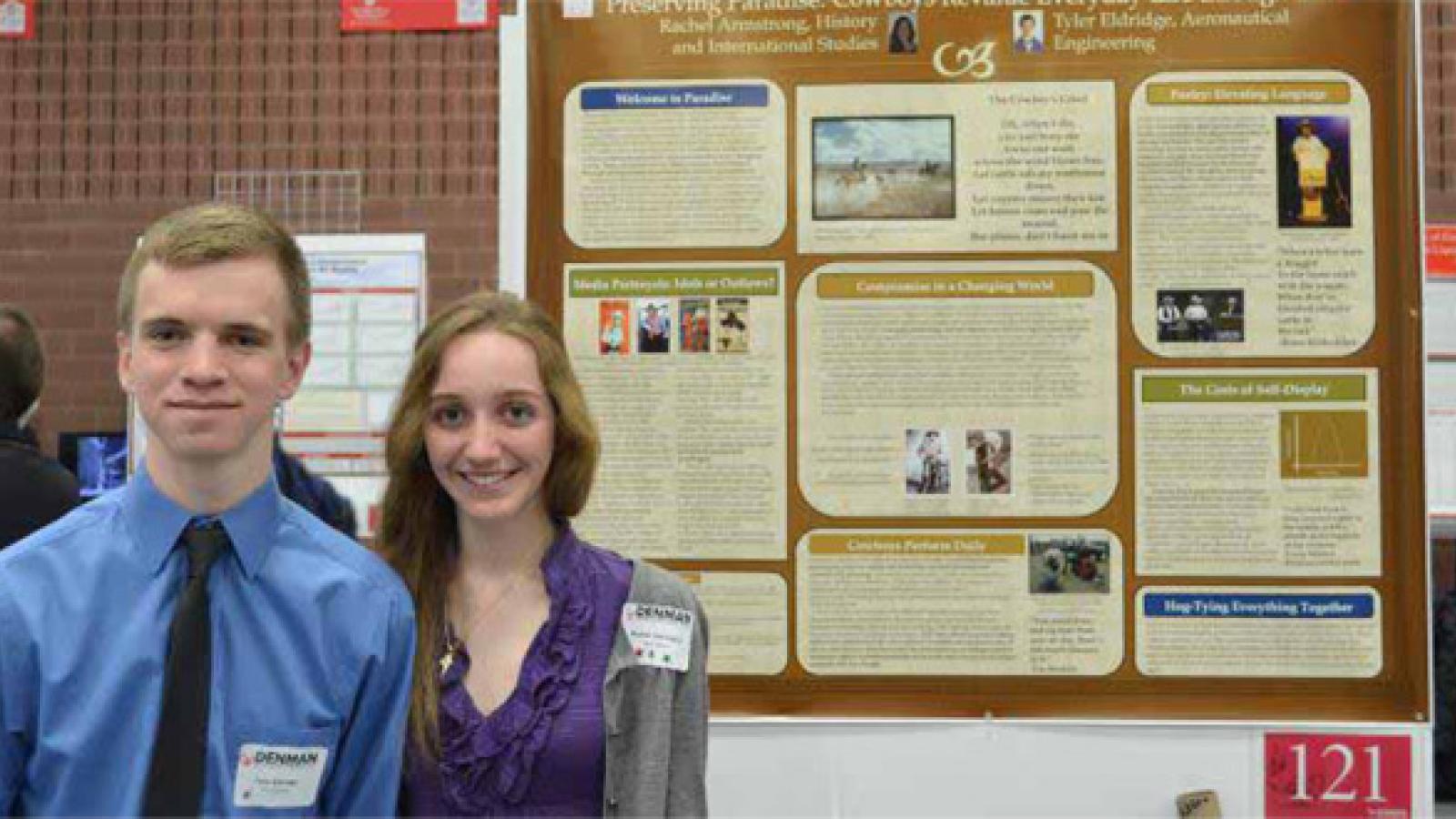Presenters: (photo left to right) Tyler Eldridge, Rachel Armstrong
Advisor: Dr. Danille Christensen
The iconic American “cowboy” has long captured the world’s imagination: Hollywood films and award-winning television shows depict buckaroos as rough and tumble workingmen who live adventurous lives in the saddle. But cowboys work in rain or shine, brave extreme temperatures, earn meager wages, and toil to learn difficult skills. The media’s romantic illustrations disregard the harsh conditions and mundane tasks of ranch life. How do cowboys respond to these outsider depictions? How do they represent their own lives, and with what consequences? To gain insight into cowboy life we explored the Library of Congress online collection Buckaroos in Paradise, which documents the inner-workings of Paradise Valley, a Nevada ranching community. Many of the videos, photographs, and interviews featured in the collection were recorded by ranch owner Les Stewart, beginning in the 1940s. His rare footage captures the essence of ranch life—from buckaroos skillfully roping cattle, to cowboys talking around the camp fire. We discovered that Stewart’s films not only capture cowboy performances, but they are artistic displays themselves. To further develop our analysis, we examined other primary and secondary sources relating to cowboy art—including works by cowboy poets Bruce Kiskaddon and Curly Fletcher. We periodically presented our findings to fellow classmates to refine our results, and we concluded that cowboy art has gone through cycles of private and public revaluation. Buckaroos preserve and celebrate their unique culture, elevating “everyday” occupational experiences through artistic displays such as poetry, workplace showmanship, and even documentation itself. But media interpretations and increased public recognition can also change cowboy art, forcing some buckaroo performances back into the private arena of everyday work. Our research reveals connections between work, art, and social value; underscores the importance of ethnographic work; and explores the role of adaptation in cultural traditions.

